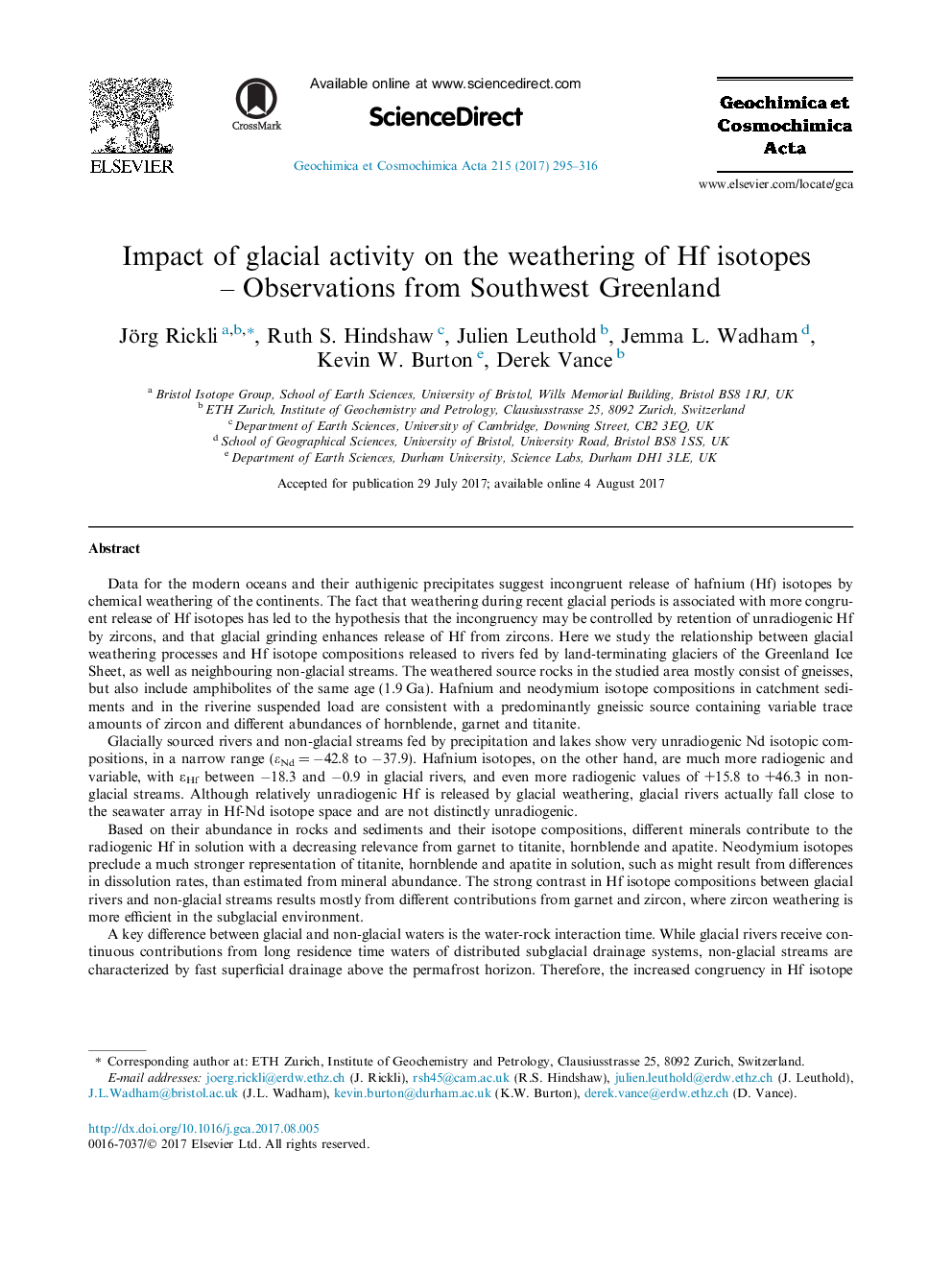| کد مقاله | کد نشریه | سال انتشار | مقاله انگلیسی | نسخه تمام متن |
|---|---|---|---|---|
| 5783246 | 1637942 | 2017 | 22 صفحه PDF | دانلود رایگان |

Data for the modern oceans and their authigenic precipitates suggest incongruent release of hafnium (Hf) isotopes by chemical weathering of the continents. The fact that weathering during recent glacial periods is associated with more congruent release of Hf isotopes has led to the hypothesis that the incongruency may be controlled by retention of unradiogenic Hf by zircons, and that glacial grinding enhances release of Hf from zircons. Here we study the relationship between glacial weathering processes and Hf isotope compositions released to rivers fed by land-terminating glaciers of the Greenland Ice Sheet, as well as neighbouring non-glacial streams. The weathered source rocks in the studied area mostly consist of gneisses, but also include amphibolites of the same age (1.9 Ga). Hafnium and neodymium isotope compositions in catchment sediments and in the riverine suspended load are consistent with a predominantly gneissic source containing variable trace amounts of zircon and different abundances of hornblende, garnet and titanite.Glacially sourced rivers and non-glacial streams fed by precipitation and lakes show very unradiogenic Nd isotopic compositions, in a narrow range (ÉNd = â42.8 to â37.9). Hafnium isotopes, on the other hand, are much more radiogenic and variable, with ÉHf between â18.3 and â0.9 in glacial rivers, and even more radiogenic values of +15.8 to +46.3 in non-glacial streams. Although relatively unradiogenic Hf is released by glacial weathering, glacial rivers actually fall close to the seawater array in Hf-Nd isotope space and are not distinctly unradiogenic.Based on their abundance in rocks and sediments and their isotope compositions, different minerals contribute to the radiogenic Hf in solution with a decreasing relevance from garnet to titanite, hornblende and apatite. Neodymium isotopes preclude a much stronger representation of titanite, hornblende and apatite in solution, such as might result from differences in dissolution rates, than estimated from mineral abundance. The strong contrast in Hf isotope compositions between glacial rivers and non-glacial streams results mostly from different contributions from garnet and zircon, where zircon weathering is more efficient in the subglacial environment.A key difference between glacial and non-glacial waters is the water-rock interaction time. While glacial rivers receive continuous contributions from long residence time waters of distributed subglacial drainage systems, non-glacial streams are characterized by fast superficial drainage above the permafrost horizon. Therefore, the increased congruency in Hf isotope weathering in glacial systems could simply reflect the hydrological conditions at the base of the ice-sheet and glaciers, with zircon weathering contributions increasing with water-rock interaction time.
Journal: Geochimica et Cosmochimica Acta - Volume 215, 15 October 2017, Pages 295-316